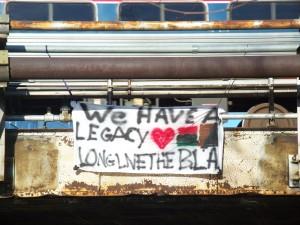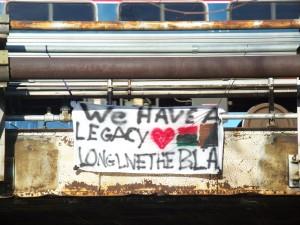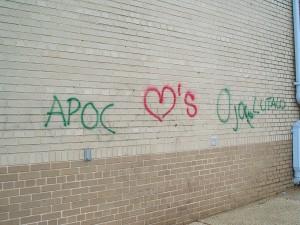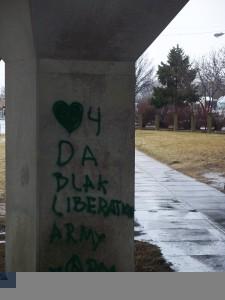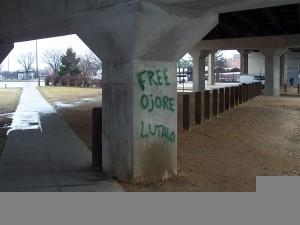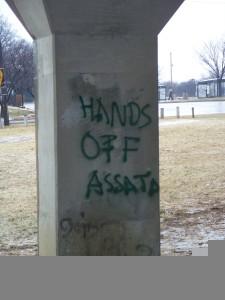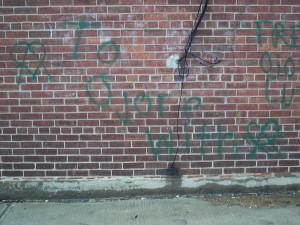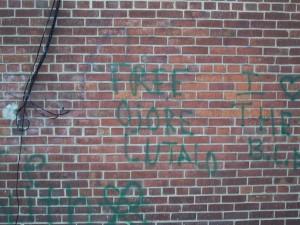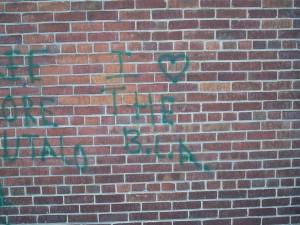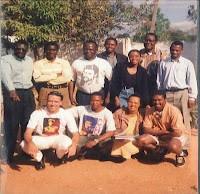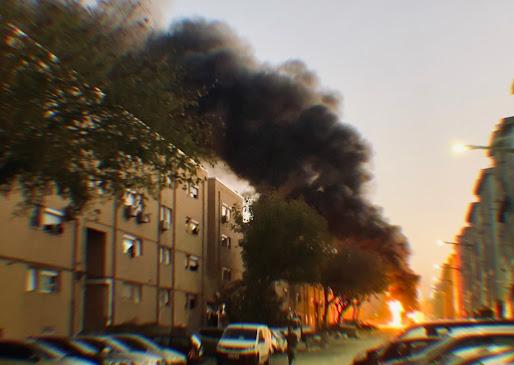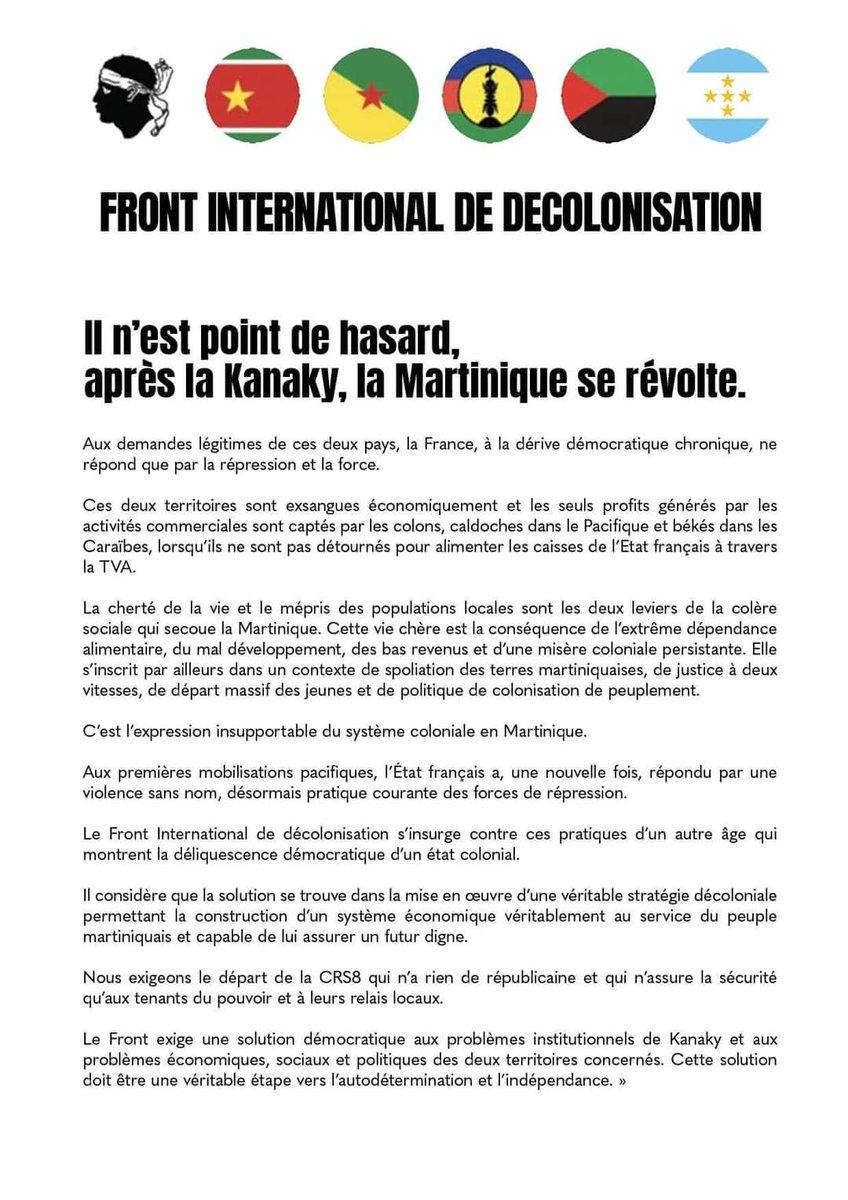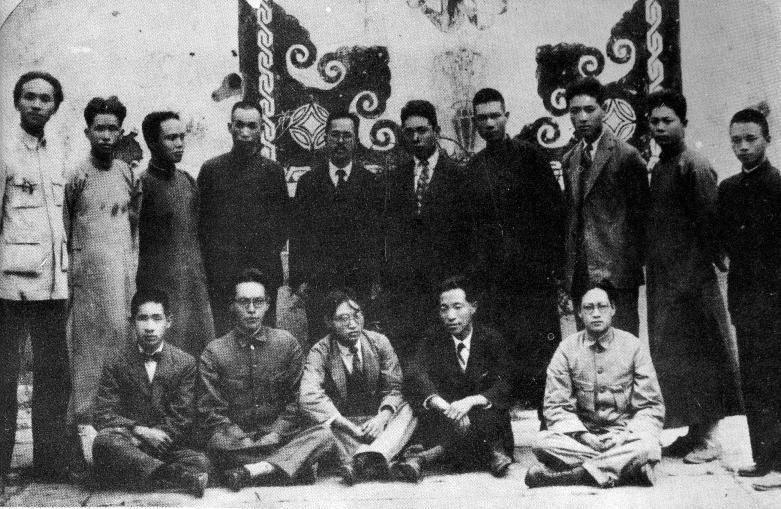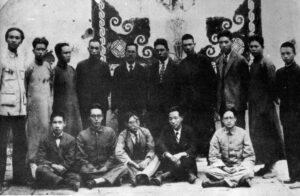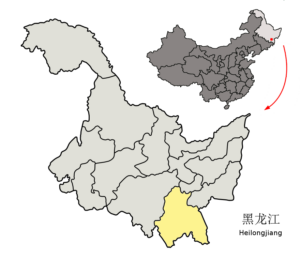Taken from; https://web.archive.org/web/20100303101332/http://jalanjournal.org/2008/09/stop-dividing-the-korean-nation-a-vision-of-unity-from-below-3/
Jalan was published by a sadly short-lived collective of South, South East and East Asian radicals, in diaspora in the “US” and their comrades elsewhere in the world, interestingly in their politics they share several tendencies with the New Beginning Movement [1] of the Caribbean in their rejection of state “socialism” in favour of workers self-control and community direct democracy.
“We are Filipino, Korean, Pakistani, Iraqi, Afghani, Indonesian, Chinese, Palestinians and countless other faces. We are gender-bending men and women, queer and straight. We are fierce and loving. We are what the racists fear.
[…]
In the past, pan-Asian solidarity has been pursued through state power from above: Bandungism and Maoism. Both sacrificed everyday Asian lives to the strategic interests of statesmen, giving the idea of Asian unity a bad name. Today, a new vision is our only option, nourished by everyday struggles for freedom and democracy that Asian peoples wage in the family, at work, in their neighborhoods, and schools. From the relentless Intifadas of Palestinians pushing up against apartheid, to the jam-packed streets of the 2005 Hong Kong WTO protests exploding with fierce South Korean farmers, Filipino activists and Japanese anarchists, we are in action. The new society is breaking out. Try to keep up!” [2]
In another article on their website, they critique white “anti-racist” strategy;
“liberal strategies of “anti-racism” will not liberate us. Liberals encourage white people to question their stereotypes as part of confronting their “privilege.” They do not attempt to abolish the institutions like military bases that produce and reproduce these stereotypes to keep us subordinated.” [3] Later in the article they also address commonplace stereotypes of Asian people(s) such as the Model Minority myth, the Docile Worker Myth, the Perpetual Foreigner Myth and the Myth of the Yellow Peril.
It’s been hard to find anyone talking about them besides the South African Zabalaza Anarchist Communist Federation mentioning them in their magazine where they correctly describe Jalan as a part of the long history of anti-authoritarian social movements of Asian people(s) however (as usual) they label Jalan as an anarchist project, which the editors never call themselves, despite hosting an article about anarchism in the Asian diaspora(s) in “America” & a review of a book about anarchism in China.
Mutt, Muntjac Magazine.
[1] New Beginning Movement, Matthew Quest https://www.jstor.org/stable/26752156 (The Jalan website also has a link to a New Beginnings Journal with similar politics, tho I don’t believe the two are related) https://web.archive.org/web/20110823015001/http://nbjournal.org/our-vision/
[2] Who Are We, Jalan Journal https://web.archive.org/web/20100303101713/http://jalanjournal.org/mission/
[3] Asians Against White Supremacy, Jalan Journal https://web.archive.org/web/20110818200031/http://jalanjournal.org/2008/09/asians-against-white-supremacy/
Stop Dividing the Korean Nation: A Vision of Unity from Below
Over the past decade, Korea has been at the forefront of conflicts over U.S. presence in Asia, the independence and integrity of Asian nations, and what types of economic systems can lead to modernization and prosperity. Many everyday Koreans are asking themselves, why is the US army still present in Korea half a century after the end of the Korean War?
Despite North Korea’s nuclear charades, many are not convinced that the North poses a serious threat to the South Korean people. In fact, the expulsion of Pyeongtaek farmers to build a new U.S. military base, the killing of young South Korean women by U.S soldiers, and the kidnapping of South Koreans in retaliation for their participation in the U.S.’s coalition of the willing in Iraq often seem like more potent problems than Kim Jong Il’s firecrackers. Calls for US withdrawal and demilitarization have raised discussions of different visions of national reunification and the possibility of a final end to the Korean War.
This has led one wing of the South Korean ruling class to consider more friendly relations with the North in a plan called the Sunshine Policy. Among other overtures, they have financed and built the Kaesong Industrial Complex, an export processing zone along the border of North and South Korea. This project is aimed at opening up the North to the recipe of the South Korean miracle economy ofcheap, oppressed female labor and strong state intervention. Liberals like Roh Moo Hyun, former South Korean president, call it a step toward reunification. The conservatives, like recently elected president Lee Myung Bak more honestly tout it for the investment opportunities it offers, while affirming that reunification is not on the horizon at any time soon.
The notion that capitalism could ever bring unity to Korea overlooks the fact that historically it has been rival versions of capitalism, backed by rival cold-war empires that have torn apart Korea and subjugated its people. Kaesong is the last thing that workers need in either North or South Korea. It breathes new life into the decadent, oppressive regime in the North, and undercuts decades of labor struggle in the South by shifting production from militant South Korean factories into a new industrial zone that can more easily be managed. In reality, South Korean workers have called for solidarity with their brothers and sisters in the North, giving birth to a more encompassing vision of reunification on the basis of democracy and workers self management. It is this vision which offers the best hopes for the national liberation of the Korean people.
Good Asian, Bad Asian
As Asian Americans we search through the news to find out what is going on in Korea and find many racist ideas that have been applied to us as well. South Korean elites imagine they are bringing progress to the backward North Korea. This resurrects the old drama of the Good Asian trying to convert the Bad Asian to respect international standards of US Empire. This is a reflection of the racial dimension which attempts to give legitimacy to U.S. foreign policy.
North Korea plays the part of the “Bad Asianâ€. Kim Jong Il is the Fu Manchu figure, a carrier of the Yellow Peril. Quiet but subversive, he cooks up unauthorized nuclear technologies that can potentially destroy the world if they don’t flop and crash into the sea. Although ample evidence of his motives and methods of rule are easily available, the US State Department and its media lackeys keep insisting Kim is an enigma. All they can do is speculate about his mistresses, his madness, and his Dear Leader fantasies. Although he has made clear that he wants to move toward some kind of revamped Chinese style Communism, more open to working with U.S. capitalism, the media keeps insisting that North Korea is part of the Axis of Evil, and that every single North Korean hates every American with a passion. There are other examples of this Bad Asian figure more close to home, for example the Chinese scientists suspected of passing US military secrets to the People’s Republic. The Bad Asian is a perpetual foreigner to the US, linked forever to the nation of his/her ancestors. Even when his/her brains can serve to improve US technology, the Bad Asian is constantly a potential threat to US National Security and cannot be trusted with sophisticated weapons technology.
For every Bad Asian, there is a Good Asian complement. South Korea is the Charlie Chan figure, imbued with positive stereotypes of being intelligent, witty and diligent, much like the model minority Asians in the US. South Korea’s “Asian Tiger” status, its ability to rise up from Third World to First World economic standing in a matter of a few decades is testament to its success. However, its achievement shines a brighter light elsewhere, reiterating the supposed necessity and effectiveness of US imperialism in Asia. The US government emphasizes time and again, that South Korea’s success would never have been possible without the presence of the protective US military bases, the Demilitarized Zone (DMZ), and US economic advisors.
This Good Asian-Bad Asian game obscures the fact that people on both sides of the DMZ are Koreans; they speak the same language, eat the same food, celebrate the same holidays, and have the same long and proud tradition of national unity and resistance to foreign invasions. It was the U.S. and Russian imperialists that arbitrarily decided they would be two separate countries.
Beyond the cold war: two competing forms of state capitalism
Seen from the perspective of the prisons and assembly lines on both sides of the DMZ, there are great similarities between the North and the South. Both Korean states came to power by defeating a unified and radically democratic government that the Korean people had tried to institute at the end of WW2. Before the US and Russian armies could occupy and rip up the Korean peninsula, the Korean people started to dismantle the Japanese colonial state and its system of industrial slavery, replacing it with democratic workers councils and town assemblies. They tried and punished corrupt Korean collaborators and Japanese colonizers. However, when the US Army got to the peninsula, they destroyed this burgeoning democratic government with the help of right-wing fascist gangs. They propped up the remnants of the Japanese colonial state, filling its official positions with Korean collaborators and American advisers. In the North, the emerging democracy was not crushed but rather co-opted. Its leaders were controlled by the Korean Communist party and when some of them revolted, the Russian army helped Kim Il Sung put them down. In any case, both regimes were founded at the expense of democracy and national independence in Korea.
South Korea under the rule of the chaebols
The US Cold Warriors claimed that their presence in South Korea would help create a future for Asia free from Communist tyranny. But from the end of World War II till 1987, this rhetoric masked a South Korean right wing dictatorship complete with a US-trained security apparatus unapologetically called the Korean CIA. Run by huge domestic conglomerates protected by the state, the South Korean economy was a far cry from an idealistic free market that in reality exists nowhere, not even in the US. Much like its North Korean counterpart, the South Korean state has imposed an economic plan of ruthless modernization from above based on the assumption that development and progress are only possible with a huge state disciplining its workers to produce at a breakneck speed. The system on both sides of the DMZ can thus be called state capitalist.
The South Korean state historically controlled the movement of capital and goods across its borders in order to protect and rapidly expand its domestic industries. The largest investors in the South Korean economy were either state-owned enterprises or heavily state-subsidized monopoly corporations called chaebols run by an oligarchy of several families. Hyundai, Samsung and Daewoo were all built up by the government’s economic planners. Apparently, the South Korean elites and the US Cold Warriors, despite their free market rhetoric, were not afraid of a state-controlled economy as long as it was their state-controlled economy, as long as economic planning was kept in the hands of elites allied to US imperialism, and out of the hands of everyday Koreans.
Despite the severe repression of the South Korean police state, workers and students conducted heroic campaigns from the 1970s onward for democracy and workers’ self-management. First led by women who had recently migrated from their farms to work in the Wonpoong and Dongil garment sweatshops in Seoul, this movement showed the world that migrant women workers in light industries are not just passive victims and do in fact shape history. In the 80s, this movement developed into general strikes across industry and gender lines. It was supported by liberation theology Minjung churches and worker-priests like Rev. Choo Wha-soon. Student activists dropped out of the universities to lead clandestine political study and support groups in Korea’s industrial zones. This political fermentation came to a boiling point with the Kwangju uprising of 1980, a mass rebellion which was brutally suppressed by the South Korean military.
With the general strike of 1987, the dictatorship finally fell and was replaced with a form of multi-party representative democracy. However, like all representative democracies, the South Korean state continues to suppress the self-governing capacities of its population. The less radical leaders of the labor movement have been co-opted into the new government, where they repress other labor activists who have continued to push for greater workers control and safeguards against casualization and the bosses divide and conquer tactics. The recent imprisonment of Korean workers struggling in solidarity with non-Korean immigrant workers is a case in point.
During the 1997 Asian economic crisis, the IMF, World Bank, and the US treasury tried to rearrange South Korea’s state-controlled economy and turn it over to neo-liberalism, making it easier for American capitalists to invest in Korea. A wing of the South Korean middle classes today wishes to go in this direction, and South Korea has signed the Free Trade Agreement with the U.S. against the wishes of hundreds of thousands of Korean demonstrators. Korean workers and farmers have taken to the streets not only in Korea but everywhere in the world at anti-globalization demonstrations from Seattle 1999 to Hong Kong 2005. This summer they held massive demonstrations, facing down police repression in order to oppose Lee Myung Bakâ’s decision to allow the import of U.S. beef that is potentially tainted with mad cow disease. When the cops tried to isolate the supposed radical elements leading this movement they failed because the demonstrations were largely self-organized through grassroots networks of citizens. This should make it clear that the Korean people are not conservative just because a conservative president was elected and there is a massive groundswell against him, just like there is massive discontent against Bush here in the U.S.
North Korea, Inc.
If state-capitalism thrived under the South Korean chaebol, it thrived in North Korea under a one-party dictatorship. The Korean Communist Party under Kim Il Sung also pursued rapid economic development, prioritizing heavy industry in this case with Soviet and Chinese rather than American investment capital. Despite all of its rhetoric about workers power, the North Korean government believes that its workers are not and never will capable of economic planning. Rather than private bosses, their labor is exploited and managed by Party bureaucrats and state planners who command them when to work, how to work, and how much to produce. In this sense, the North Korean state functions like one giant capitalist corporation, exploiting resources and people to make a profit that it uses to bolster the rule of the Party through the development of military hardware. Rather than South Korea’s oligarchy of several corporate families, you have the Kim family monarchy-monopoly. For a long time, this worked well in capitalist terms, and North Korea in the 1970s was better off economically than the South, but after the USSR fell and Soviet capital became unavailable, the Northern economy in the 90s spiraled toward famine.
It is likely that the Northern leaders will go the route China has gone, opening up to international capitalism while at the same time maintaining the iron grip of Party control of all aspects of life inside the country itself. This would not be a shift from Communism to Capitalism but simply a shift from one form of state- capitalism to another.
During the Cold War, Korea was ripped apart by different visions of global capitalism, led by the USSR and the US. Now the Cold War is over and the question is whether China’s rising state capitalism or the U.S. ‘s neoliberalism will be dominant on the peninsula. North Korea desperately needs foreign investments to survive, and which international block of capital they will orient towards is still unclear. They are moving to allow limited foreign direct investment from China and South Korea, and have even indicated that they desire a more friendly relationship with the U.S. They are playing China and the U.S. off each other to make sure that they get the best deal possible from their future imperial patron.
U.S. leaders are setting up roadblocks to reunification not only because they want an excuse to keep their troops in the South but also because they fear a reunited Korea at this time may lean towards the Chinese orbit. While they have their hands tied in Iraq, the US imperialists have tried to keep up the nuclear scare to delay questions of reunification until such a time when they can ensure the new Korean ruling class will sway toward them using force if necessary.
Alternatives from below
Many everyday Koreans are getting impatient and have their own ideas. Hardly the passive duped Asians the American media paints them as, many have decided that they don’t want to live under the very modern despotisms that have developed on both sides of the DMZ.
In North Korea, many dissidents risk their lives to defect from the current government, escaping the desolation of North Korea to join their families in the South. Some escape to China, where they are subsequently caught by a harsh police force and sent back to North Korea to face labor camps and prison for supposedly betraying the nation. Defections do not necessarily indicate pro-capitalist leanings, but simply that life under the North Korean regime is so intolerable that leaving home is preferable to staying and fighting for something new. Given our limited access to North Korean society as Americans it is difficult to see what is happening on the ground today. But it is hard for us to believe that the North Koreans are all as passive and brainwashed as the US media would like to paint them.
We have more information about the South, though the depth, power, and sophistication of their developing social movements are frequently understated here in the U.S. Today there is a continuation of the democratic labor struggles discussed earlier. In the late 90s, the government tried to sneak through a program of mass layoffs to satisfy IMF austerity measures imposed by American capitalists. In response, workers, students, and churches organized a nationwide general strike despite the winter weather.
This has been followed by recurring smaller strikes and battles against layoffs and unemployment. In one case, Kim Wu-chung, founder of the Daewoo conglomerate embezzled billions of won and fled the country while one third of the Daewoo workforce was being laid off. In response, Daewoo workers and angry citizens formed the ‘Rob the Rich to Feed the Poor’ brigade to get their money back. They chased Kim to Europe and threatened to track him down, forcing the reluctant Korean government to intervene against its protege. These labor struggles represent a serious and ongoing crisis for the South Korean regime.
At the same time, struggles against the presence of the U.S. military in South Korea have been escalated by the expansion of a U.S. military base in the Pyeongtaek region. It is built with the intention of creating an up-to-date US military hub in East Asia, ready for global deployment. This expansion, endorsed and led primarily by the Korean government has brought about forced displacements of many farmers in the Daechuri and Doduri villages.
The backlash against US troops overflows into anti-war sentiments among everyday Koreans. In the wake of the U.S. backed Israeli war on Lebanon in the summer of 2006, South Korean anti-war activists declared they did not want to be the Israel Of Asia, a client state of the U.S. used to bolster its imperialism in the region. The South Korean government provided support for the U.S. war effort in Iraq, where Koreans were kidnapped by the Iraqi resistance. This has prompted many to resist a relationship of dependence that requires Koreans to help kill other people of color and die for U.S. imperial misadventures in the Middle East.
Under these circumstances, North Korea serves as an important ideological tool for the US to justify its continual presence in South Korea. To counter these demands for US withdrawal from Korea, the US State Department and the Pentagon play up the threat posed by North Korea. Basically, they claim they need to save Koreans from other Koreans. For a while, this was facilitated by Kim Jong Il’s policy of nuclear blackmail, where he developed nuclear weapons against the will of the US and its allies. But Kim has engaged in the Six Party Talks, deescalating this conflict. North Korea has taken steps to begin dismantling its weapons program although questions still remain about its compliance. In the last months of his presidency, Roh visited Kim Jung Il in North Korea and now Kaesong is up and running. All of these developments indicate a lessening of tensions between the two governments. This begins to raise the question of why are U.S. troops still there? Why does the U.S. want military tension in Korea when most Koreans do not want it?
The need for an alternative to the Sunshine Policy
A liberal faction of the South Korean ruling class has responded to these questions by calling for the Sunshine Policy, a gradual process of reunification based on the leadership of the South Korean capitalists; Kaesong is a key piece of this. It would provide key benefits for the South Korean elites. They could bolster their nationalist credentials in the face of popular opposition to their collaboration with an increasingly discredited U.S. Empire. Once more, Korea would be a strong, united nation, but its projected liberal leadership would at best have a thin façade of independence and would still be subordinated to U.S. interests in the region (perhaps with parallel patronage from China).
South Korean businessmen could also begin to shift production into the North, allowing them to fire and replace militant workers concentrated in the industrial parks of the South. This would allow the bosses to regain the upper hand that they have lost due to the militancy and organization of the South Korean labor movement. They have already turned toward exploiting migrant workers from other Asian countries, forcefully preventing them from unionizing so as to undercut union wages in South Korea. They would most certainly welcome a highly regulated stream of destitute, displaced North Korean farmers who could come south to staff new sweatshops.
For all of these reasons, the liberal capitalist vision of the Sunshine Policy represents a potential defeat for South Korean working folks and a co-optation rather than a victory of the struggle for national liberation. By contrast, it is the decades-long struggles of Korean workers, students, and radical churches that offer the best hope for potential national unification on a democratic and anti-imperialist basis. Certainly, there are contradictions within these movements, as with any mass movement, and some tendencies within them are tied to the liberal wing of the state bureaucracy and support the Sunshine policy. Nevertheless, these movements have shaken up South Korea’s authoritarian state capitalism, bringing down the dictatorship and keeping the remaining oligarchy on its toes.
With increased contact between the North and the South, our hope is that these movements will spread across the peninsula, challenging the Northern regime as well by linking up with dissident voices there. This could potentially lay the groundwork for reunification from below, offering workers in the North solidarity and mutual aid rather than cheap wages and subordination to Southern profits. What can international Asians and other people in solidarity do to support these developments? We can begin by organizing in our own workplaces, schools, neighborhoods, and places of worship, making links with Korean workers, students, radical Christians, etc.
American workers today are facing the fact that the jobs they used to work have been shipped overseas to Asia. The conservative trade union bureaucrats and labor aristocracy reinforce the racist notion that workers in Asian factories are all passive and obedient scabs who have undercut a stronger tradition of American labor struggle by stealing US jobs. This overlooks the fact that the auto strikes and urban uprisings of Detroit in the 60s were closely followed by strikes and uprisings in Korea in the 70s and 80s when production shifted there. Far from being passive, Korean workers, and Asian workers in general, are at the forefront of labor militancy worldwide. When we think of the working classes’ today, we shouldn’t think only of middle aged white guys in Michigan with beer bellies but also young women militants in Seoul. They should be seen as allies and models for a reinvigorated American labor movement, and international links desperately need to be made if workers on both sides of the Pacific are going to successfully confront the assaults that neoliberal elites are making on our livelihoods.
American students also need to reach out to our Korean counterparts. Recently American students have raised demands for student control over university investment policies, for example with calls for divestment from Israel and from US military contractors. We should extend these calls by demanding that our universities suspend any research funded by the US armed forces, in solidarity with Korean student’s demands for US troop withdrawal from the peninsula. At the same time, we should try to make links with student activists in Korea and learn from their struggles. Through the 1980s, South Korean university students refused to see themselves as separate from the working class struggle that everyday Koreans were engaged in. They bridged the conventional divide between mental and manual labor by working alongside other Koreans in factories, applying their education in radical ways in political study groups and discussions. American students today have much to learn from the perseverance of these South Korean student militants.
As Asian Americans, we are often held up as the model minority, as obedient, upwardly mobile students living the American dream, loyal to U.S. Empire and white supremacy. South Korea is held up as the model minority internationally, as a sign of the kind of prosperity that you can get if you submit to US banks controlling your economy and 35,000 U.S. troops stationed in your country. It is time that we say as loudly as possible that malls and nightclubs in Seoul are little compensation for the fact that those troops have been stationed there to divide a proud Asian country and reinforce a client regime against the democratic aspirations of its own people. Korean workers and students have shown that they do not want to be passive, money grubbing lackeys of white supremacy; they want their country back and want to control their own lives. Inspired by their example, we should cast off the model minority myth and take control over our own lives too. We can begin this by demanding that our own workplaces, schools, and places of worship stand with rather than against the Korean struggle for democracy and national unity.

